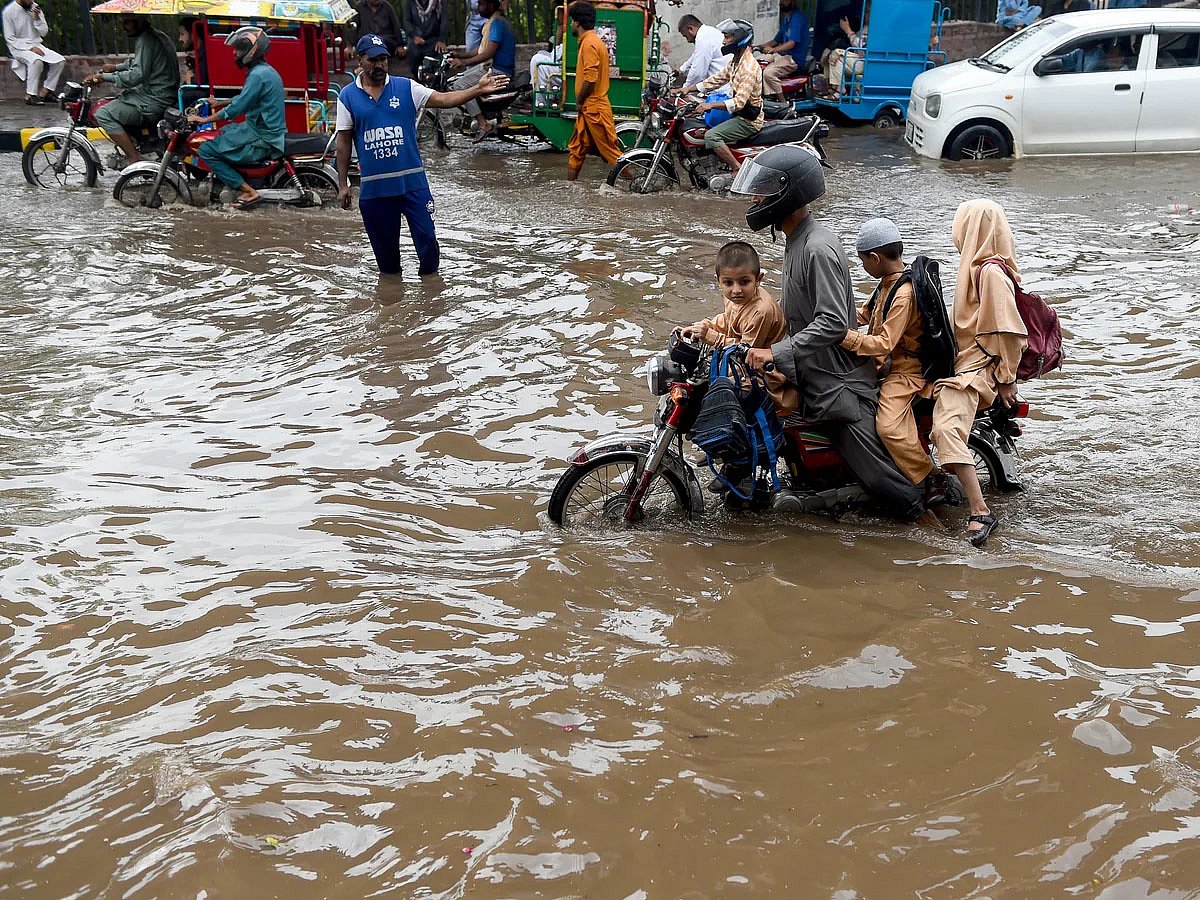Pakistan is barely recovering from one of the worst flooding to have hit the country in decades. Conservative estimates put 1,500 dead and more than two million displaced. The National Disaster Management Authority (NDMA) reports that more than 8,400 houses, 239 bridges and nearly 700 kilometers of roads have been damaged or destroyed. Reports indicate 6,500 livestock lost – a huge blow to the rural poor. Over 2.2 million hectares of cropland is affected, wiping out harvests and pushing food prices higher. Prices for wheat flour – the staple - rose 25 percent in the first week of September.
Pakistan’s climate change minister has slammed the “crisis of justice” facing his country.
Recurrent floods in Pakistan do not just wash away homes; they erode the foundations of the economy. Agriculture — the backbone of Pakistan’s economy — suffers repeated shocks. Damaged irrigation canals, drowned fields, and lost harvests exacerbate food insecurity. Industrial growth stagnates as supply chains are disrupted. The state spends more on relief than on prevention. International donors grow fatigued, unwilling to pour money into a leaking vessel.
Climate-vulnerable nation
Pakistan ranks among the top 10 most climate-vulnerable nations, but it contributes less than 1 percent of global emissions. Home to nearly 13,000 glaciers, rising global temperatures have accelerated glacial melt in the Himalayas, swelling rivers beyond capacity in Pakistan. Scientific reports had long warned of erratic monsoon patterns, heavier rainfall, and extreme weather events across South Asia. Pakistan, being downstream, is particularly vulnerable. Yet despite knowing the risks, little was done over the years to prepare to avert the disaster.
Dr Syed Faisal Saeed, Pakistan’s chief meteorologist, told the BBC that “monsoon rains are likely to increase in the coming decades, so this issue is not a one-year fix.” Pakistan’s terrain also leaves it prone to extreme weather events and natural disasters. Climate change therefore, is no longer an abstract threat; it is Pakistan’s lived reality.
Amidst this disaster, the two ruling parties are fighting over the name of the programme under which the government handout is to be issued to the hapless people who have lost their meagre lifelong possessions, farmlands or other means of livelihood during these disastrous floods.
While the government may blame “natural calamity,” the truth is that Pakistan’s devastation is as much man-made as it is climate-induced. The tragedy unfolding now is the culmination of decades of negligence, corruption, and mismanagement of natural resources.
Timber mafia
The timber mafia, operating with impunity, has stripped the country’s forests bare. Satellite imagery reveals alarming rates of deforestation, leaving mountainsides vulnerable to soil erosion. With no roots to hold the soil, heavy rains trigger deadly landslides, wiping out villages and blocking river flows that later burst with destructive force.
In the valleys and catchment areas, reckless construction has narrowed natural waterways. Builders, often in collusion with local authorities, have filled streams, canals, and drainage channels to erect shady housing colonies. Within cities, once-functional stormwater drains have been encroached upon and sold. As torrential rains descend, these obstructions choke natural water passages, turning streets into rivers and low-lying neighbourhoods into lakes. Karachi, Lahore, Rawalpindi, and smaller towns alike are now death traps every monsoon season.
Root cause
Weak governance is the root cause of Pakistan’s inability to mitigate or recover from disasters. Laws exist against illegal logging, against encroachment on water channels, against unsafe construction — but they are rarely enforced. Politicians and bureaucrats often collude with profiteers. Corruption permeates relief operations: funds meant for rehabilitation vanish, rations are siphoned off, and politically connected contractors are awarded inflated contracts. Of the over $10 billion pledged in January 2023 after the 2022 floods Pakistan received only $4.69 billion for the want of long-term credible projects from Pakistan.
The UN and its partners are struggling to match the scale of the present disaster. UN Aid Co-ordination Office (OCHA) has released $5 million from the UN’s Central Emergency Response Fund, with an additional $1.5 million channelled to local NGOs.
UNICEF, World Food Programme and other agencies are trucking safe water, providing health and nutrition supplies, and setting up temporary learning centres for children.
With each flood, Pakistan is pushed closer to the brink: an economy sinking under debt, philanthropy sustaining much of the relief work and with governance structures busy only point-scoring.
Stark warning
The floods of 2025 are not merely another seasonal tragedy. They are a stark warning that Pakistan’s survival hinges on tackling climate realities, ending environmental plunder, and building governance systems that serve the people rather than exploit them.
Pakistan must therefore, initiate a long-term reforestation programme; restore natural floodplains; depoliticise and strengthen disaster management institutions; push for regional dialogue on climate resilience; rethink its urbanisation model incorporating efficient drainage; break the nexus of corrupt politicians, officials, contractors, and land mafias to ensure transparency in relief and reconstruction through independent monitoring.
Sajjad Ashraf served as an adjunct professor at the Lew Kuan Yew School of Public Policy, National University of Singapore for 2009 to 2017. He was a member of Pakistan Foreign Service from 1973 to 2008 and served as an ambassador to several countries.
Network Links
GN StoreDownload our app
© Al Nisr Publishing LLC 2025. All rights reserved.
